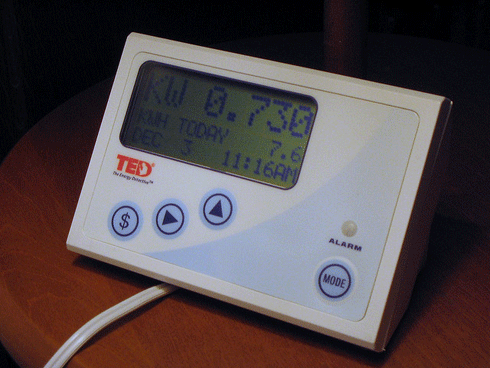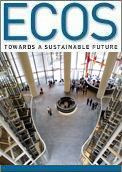
|
Published: 5 March 2012
Efficient use ‘the main game’ say energy experts
Energy-efficiency measures can help the world cut its carbon footprint by over 50 per cent and save money at the same time, according to visiting experts, including an advisor with the International Energy Agency (IEA) in Paris.

|
|
Monitoring energy use can help consumers identify and thus reduce consumption – and cut energy bills in half, say experts. Credit:
Tai Viinikka
|
‘Australia has led the world in some areas of energy efficiency, like banning incandescent light bulbs, the NSW Energy Efficiency Trading scheme and the Australia Building Greenhouse Rating Scheme, but also has some ground to make up in other areas,’ said IEA spokesperson, Dr Grayson Heffner.
Dr Heffner, an expert on energy efficiency, demand side management and renewable energy, pointed to a IEA study of public spending on energy efficiency that put Australia last in a sample of 18 countries surveyed.
Also speaking at the inaugural international Summer Study on Energy Efficiency and Decentralised Energy in Sydney was Philip Sellwood, chief executive of the UK's Energy Saving Trust (EST). The EST engages with about 3.5 million people a year, helping them reduce energy usage. Last year alone, the Energy Saving Trust saved just over 20 million tonnes of CO2 through its work.
‘Pound for pound, dollar for dollar, energy efficiency is by far and away the best way to reduce carbon emissions,’ said Mr Sellwood.
‘It's far easier and cheaper to use less energy in the first place than responding to the problem afterwards.
The event was organised by the Australian Alliance to Save Energy (A²SE), which has as its key research partner the Institute for Sustainable Futures (ISF) at the University of Technology, Sydney.
CEO of the A²SE and ISF Research Director Chris Dunstan said Australia's debate over carbon pricing had been important but it had also missed the point. ‘If applied wisely, energy efficiency, demand management and distributed generation can reduce energy bills and carbon emissions at the same time.
He says that while the carbon price is important, its impact on energy bills should not be overstated.
‘It is not the Carbon Price, but the more than $46 billion that power companies are spending on expanding and upgrading the power grid which is the major driver for the current sharp rise in electricity prices.
‘This expenditure on the grid is more than that proposed for the National Broadband Network in about half the time. It’s no wonder consumers are hurting.’
‘Between 2008 and 2014, electricity prices across Australia are expected to rise by 90 per cent. The Carbon Price will make up 10 per cent of this.
‘Even if we abandoned the Carbon Price altogether, it would make little difference to energy affordability. But the good news is that energy savings could cut power bills by as much as 50 per cent.
‘We need to remove the barriers to energy companies investing in energy savings instead of infrastructure.
Source: ISF & A2SE



